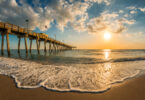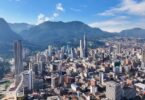Shanghai’s decades-long, multi-billion dollar building plan has transformed a mediocre skyline into a spectacular mixture of restored classic structures and towering modern buildings. Most first-time Shanghai travelers will head to the banks of the Huangpu River to grab the best photo-op of this metamorphosis.
If you’re in Shanghai for just 48 hours, you need to pick and choose where to go and what to see very carefully. You’ve got a massive metropolis to explore, but by following our recommendations you’ll experience a cross-section of notable places while also having time to savor the culinary offerings of several Shanghai restaurants.
Day One in Shanghai
Take a Stroll or Boat Ride along the Bund
The Bund is a popular mile-long promenade that runs along the west bank of the Huangpu River between the Waibaidu Bridge and the Nanpu Bridge. Design aficionados will enjoy its diverse collection of buildings that represent Art Deco, Baroque, Gothic, Neoclassical, Renaissance, and Romanesque architectural styles. Look across the river to view the contrasting modern structures in the Pudong District. Day or night, the eclectic skyline is ripe for photos.

The Bund promenade showing older buildings – Image via Sandy Bornstein
It’s also possible to take a cruise on the Huangpu River. The duration of boat trips ranges from 30 minutes to several hours. Most start at the wharf alongside the Bund area. From the water, visitors can see how the old and new meld in this exciting city.
Explore Yuyuan Garden (AKA Yu Garden)

Yuyuan Garden – Image via Sandy Bornstein
Yuyuan Garden is located a few blocks south of the Bund. It dates back to the Ming Dynasty and is a rare find in the city. Within this five-acre site is a cluster of buildings that showcase classic Chinese architecture and ancient sculptures and carvings. Surrounding the garden, you’ll find the jam-packed marketplace (Yuyuan Bazaar), where you can enjoy snacks and tea, and purchase souvenirs.
Enjoy an Aerial View on the East Bank of Huangpu River — Pudong District

Panoramic aerial view of Shanghai – Image via Sandy Bornstein
This part of town is shiny, modern, and known for its giant skyscrapers. Hordes flock to the observation decks. Hazy and polluted skies, as well as the sun’s angle, may wreak havoc on photos, but the panoramic views are incredible.
The Oriental Pearl Radio and TV Tower has 15 viewing areas spread throughout its uniquely shaped building. It also has a hotel, shopping mall, and a revolving restaurant.
Shanghai World Financial Center is noted as one of the world’s tallest buildings and is singled out by its bottle opener-looking top.
The Jin Mao Tower offers daredevils the chance to walk on an 88th floor outside ledge, while being harnessed, of course!
The newest addition is Shanghai Tower. It’s the tallest skyscraper in the city, and for the time being, the second-tallest in the world. To reach the world’s highest observation deck, passengers will take one of the world’s fastest elevators — at a lightning-fast 18 meters per second.
If time allows, take Century Boulevard to Century Park, Shanghai’s largest public park. After standing in line and walking all day, sit down and watch the locals fish and paddleboat. Additional nearby attractions include the Shanghai Science and Technology Museum, Shanghai Natural Wild Insect Kingdom, and the Shanghai Ocean Aquarium.
Day Two in Shanghai
People’s Park and People’s Square

Locals in the park – Image via Sandy Bornstein
On the second day, you can begin with a leisurely pace at People’s Park. This well-maintained retreat is located south of Nanjing Road and adjacent to People’s Square. It’s hard to get lost. Pathways with signage connect the heavily wooded sections. Mature Chinese men and women congregate near the pond and the exercise area while young children can be heard laughing on the park’s merry-go-round.
There are several noteworthy places nearby — Shanghai Municipal Government Mansion, Shanghai Museum, Shanghai Grand Theatre, Shanghai Urban Planning Exhibition Hall, and the Museum of Contemporary Art Shanghai. Look for the stairways to the underground walkways that make it easier to reach some of these places.
If you enjoy art, the best option is the Shanghai Museum. It houses China’s national art treasures — bronzes, ceramics, calligraphy, paintings, jade and ivory pieces, bamboo and lacquer wares, coins, seals, and artifacts from ethnic minorities. You can easily spend hours learning all about Chinese art.
Shop on Nanjing Road

Nanjing Road – Image via Sandy Bornstein
This pedestrian street is a shopaholic’s dream come true and a people-watching mecca. It’s filled with retail stores that cater to all markets — from souvenir trinkets to super deluxe boutiques. When you get hungry, stop for a snack along the way.
A Few Restaurant Options

Soup dumplings at Din Tai Fung – Image via Sandy Bornstein
Lost Heaven (Bund and French Concession) and Coconut Paradise (French Concession) are wonderful options for an Asian lunch. Look for Wagas for a western-style lunch (multiple locations).
For a special dinner, consider Jean-Georges Vongerichten’s seasonal menu at Mercato’s (Bund). Got a taste for Japanese teppanyaki? Try Haiku by Hatsune (multiple locations). Looking for Chinese food? Consider Xibo (French Concession) or Sichuan Citizen (French Concession). Wind down with an after-dinner drink at Barbarossa (People’s Park). We recommend trying the soup dumplings at Din Tai Fung (multiple locations in Shanghai as well as around the world).
Staying a Bit Longer? Consider …

Jewish Museum, Shanghai – Image via Sandy Bornstein
History buffs will be thrilled with the half-day walking tour of Jewish Shanghai. Dvir Bar-Gal provides a fast-paced account of the Jewish contributions to Shanghai during the 1850s-1950s. Shanghai is notable because it’s one of the two places in the world that welcomed Jewish refugees during World War II. The tour starts in the Bund area and then walks around the “Designated Area for Stateless Refugees.” You can spend time in the Ohel Moishe Synagogue and the adjacent Jewish Museum
If you’re a theme park groupie, traveling with kids, or have more than 48 hours, you can take a train to the Shanghai Disneyland. This massive and crowded park features the Disney brand’s largest Enchanted Storybook Castle, a main street called Mickey Avenue, as well as many popular attractions.
A Few Final Tips

Underground walkway – Image via Sandy Bornstein
A 48-hour whirlwind itinerary provides little time to wander away from the main tourist attractions. If possible, find a few minutes to stroll through one of the remaining older sections to get a more comprehensive overview of the city.
Patience will be a necessity unless you took Chinese language lessons before you left home. Be prepared to rely on phone apps and hand gestures. Taxi drivers may not always leave you in the right place. Hotel concierges may provide faulty directions. Hop-On Hop-Off buses don’t always follow the designated schedule. Restaurant menus might be a giant mystery except for the ones with colorful pictures. Simply enjoy the cultural experience and laugh off your missteps.
And, one last thing… don’t forget to check your country’s visa rules. American citizens MUST apply for a Chinese Visa.
[perfectpullquote align=”full” cite=”” link=”” color=”” class=”” size=””]Did we miss one of your favorite Shanghai attractions? Let us know in the comments below.[/perfectpullquote]








